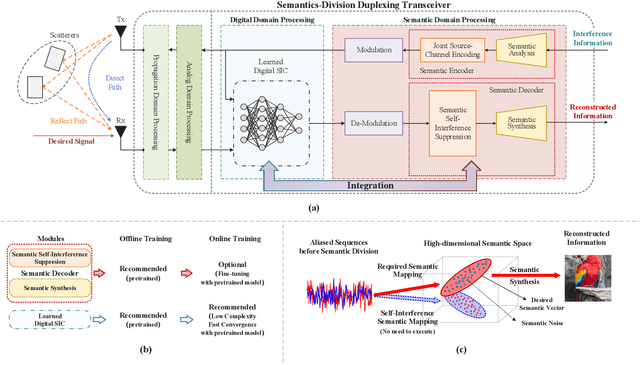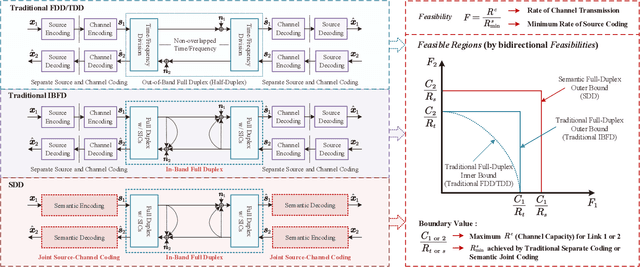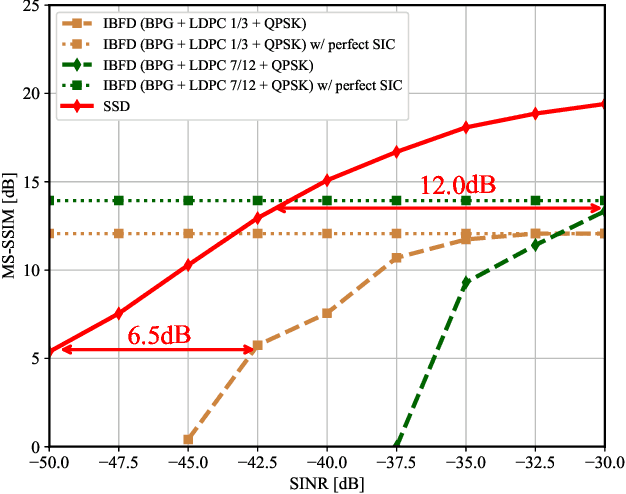Semantics-Division Duplexing: A Novel Full-Duplex Paradigm
Paper and Code
Dec 14, 2023



In-band full-duplex (IBFD) is a theoretically effective solution to increase the overall throughput for the future wireless communications system by enabling transmission and reception over the same time-frequency resources. However, reliable source reconstruction remains a great challenge in the practical IBFD systems due to the non-ideal elimination of the self-interference and the inherent limitations of the separate source and channel coding methods. On the other hand, artificial intelligence-enabled semantic communication can provide a viable direction for the optimization of the IBFD system. This article introduces a novel IBFD paradigm with the guidance of semantic communication called semantics-division duplexing (SDD). It utilizes semantic domain processing to further suppress self-interference, distinguish the expected semantic information, and recover the desired sources. Further integration of the digital and semantic domain processing can be implemented so as to achieve intelligent and concise communications. We present the advantages of the SDD paradigm with theoretical explanations and provide some visualized results to verify its effectiveness.
 Add to Chrome
Add to Chrome Add to Firefox
Add to Firefox Add to Edge
Add to Edge